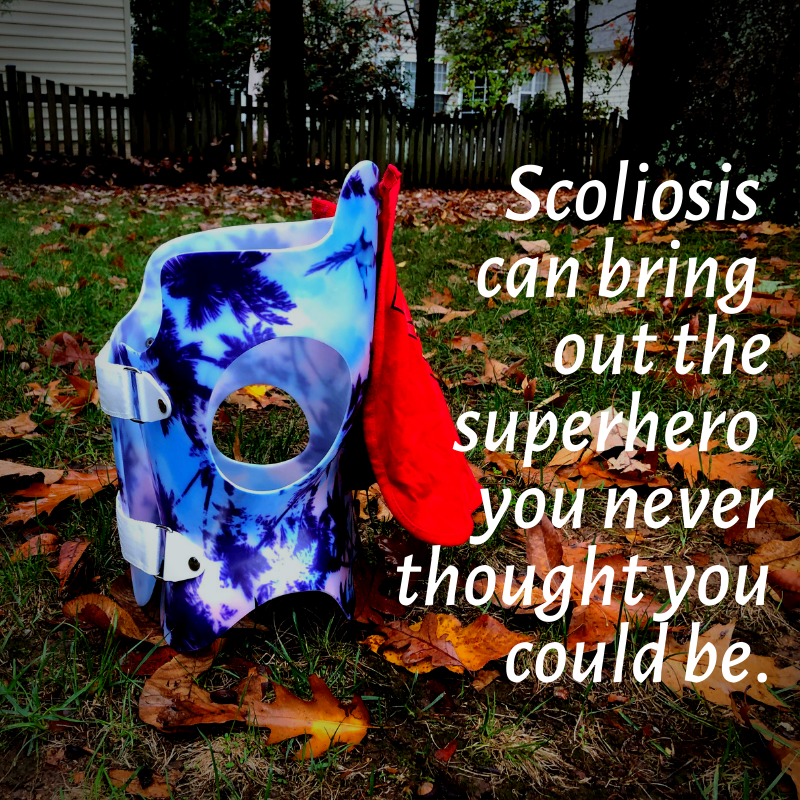Growing up is tough. Growing up while wrapped in a giant scoliosis brace can be even tougher (and the research supports this). Braced kids and teens want to wear their braces to avoid surgery and prevent their curve from getting worse.2 Unfortunately, this can cause more stress than the actual diagnosis of scoliosis.1 Additionally, bracing can lead to feelings of stress, anger, shame, and poor body image.3-6
That’s why we want to talk about how scoliosis can be emotionally difficult for kids and teenagers…because we want them to see that it is OK and completely normal to have these feelings. If we continue to overlook the emotional side of bracing, we will continue to make braced kids and teens feel isolated by their experiences. Let’s be honest and upfront – being braced isn’t always easy, and that’s perfectly fine. Although it may not seem like it, getting through your tough brace days will help teach you how to control and overcome your emotions, which is an incredibly valuable skill that will come in handy throughout your entire life.
Here’s a few tips for overcoming your tough brace days:
- Talk to someone
Whether it’s a friend, sibling, therapist, or parent, talking about how you’re feeling can help you work through those emotions. Sometimes, just talking about how you’re feeling makes you feel better. According to Psychology Today author Barton Goldsmith, Ph.D., “When you express how you really feel (in an appropriate manner), problems get solved, relationship issues get resolved, and life is easier. In addition, you will like your life better because you’re not holding on to unhealed or confusing feelings.”7
- Take your brace off and exercise
Sweat it out to help clear your mind while giving yourself a brace break! According to the American Heart Association, exercise can:
- Reduce stress
- Help you relax
- Improve your mood
- Clear your mind
- Improve your immune system
- Help you sleep better
- Improve your self esteem8
Find an activity that you enjoy doing and put your energy into the workout. You may be surprised how much better you feel at the end of it!
- Treat yourself
Practice good self-care and reward yourself! What exactly is self-care? Self-care involves activities that help you improve or maintain your emotional and physical wellbeing. What are some examples of self-care practices?
- Taking a walk in the park
- Doing arts and crafts
- Taking a bubble bath
- Eating your favorite snack
- Watching a movie or TV show
- Going shopping at your favorite store
- Go out with friends that make you laugh
- Practicing mindfulness (bringing attention to the present moment and recognizing your emotions without judging them)
Studies have shown that practicing self-care can decrease stress levels and that practicing mindfulness can help with emotion regulation and decrease depressive symptoms.9,10 If you want to learn more about mindfulness and self-care, we encourage you to check out the Mindful Kind podcast at and other mindfulness resources.
Remember:
- It takes someone strong to wear a brace all day, every day
- You don’t need to figure out every issue today
- Treat yourself with kindness
- There are people and resources available to support you
- And most importantly – it takes a Superhero to do what you do every day
References
-
Kotwicki T, Kinel E, Stryła W, Szulc A. Estimation of the stress related to conservative scoliosis therapy: an analysis based on BSSQ questionnaires. Scoliosis. 2007;2(1):1.
-
Brigham EM, Armstrong DG. Motivations for compliance with bracing in adolescent idiopathic scoliosis. Spine Deform. 2017;5(1):46-51.
-
Sapountzi-Krepia D, Psychogiou M, Peterson D, et al. The experience of brace treatment in children/adolescents with scoliosis. Scoliosis. 2006;1(1):8.
-
Sapountzi‐Krepia, DS, Valavanis J, Panteleakis GP, et al. Perceptions of body image, happiness and satisfaction in adolescents wearing a Boston brace for scoliosis treatment. J Adv Nurs. 2001;35(5):683-690.
-
Pham VM, Houlliez A, Carpentier A, et al. (2008, January). Determination of the influence of the Chêneau brace on quality of life for adolescent with idiopathic scoliosis. Ann Phys Rehabil Med. 2008;51(1):3-8.
-
Danielsson AJ, Hasserius R, Ohlin A, Nachemson AL. Body appearance and quality of life in adult patients with adolescent idiopathic scoliosis treated with a brace or under observation alone during adolescence. Spine. 2012;37(9):755-762.
-
Goldsmith B. Don’t Bury Your Feelings. Psychology Today. Available at: https://www.psychologytoday.com/us/blog/emotional-fitness/201311/dont-bury-your-feelings. Accesses October 18, 2019.
-
Working Out to Relieve Stress. American Heart Association website https://www.heart.org/en/healthy-living/healthy-lifestyle/stress-management/working-out-to-relieve-stress. Updated January 9, 2017. Accessed October 18, 2019.
-
Myers SB, Sweeney AC, Popick, V, Wesley K, Bordfeld A, Fingerhut R. Self-care practices and perceived stress levels among psychology graduate students. Train Educ Prof Psychol. 2012;6(1):55.
-
Deplus S, Billieux J, Scharff C, Philippot P. A mindfulness-based group intervention for enhancing self-regulation of emotion in late childhood and adolescence: A pilot study. Int J Ment Health Addiction. 2016;14(5):775-790.
